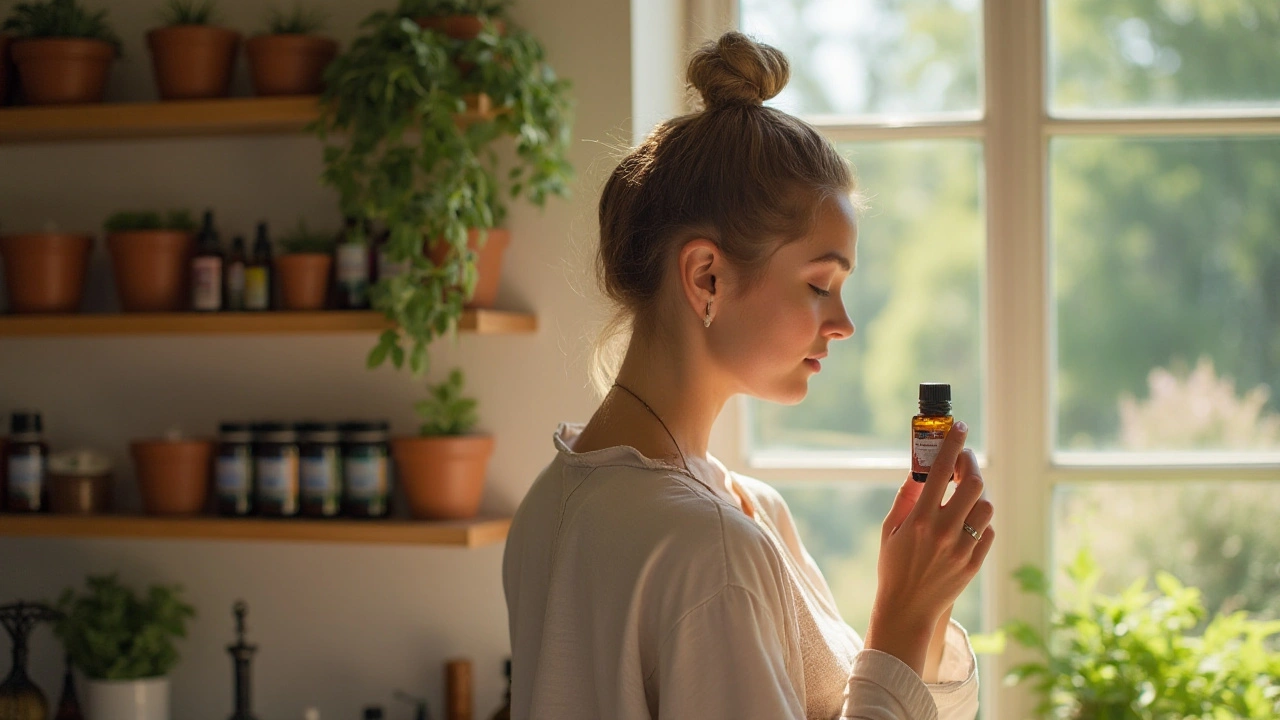Essential Oils: Practical Uses, Safety, and Buying Tips
Lots of people treat essential oils like miracle cures. They help with mood and scent, but they are concentrated plant extracts and need respect. Use them safely and you’ll get benefits; use them carelessly and you can get skin irritation, headaches, or worse.
Use essential oils mostly two ways: diffusion and topical application. For a small room, add 3–6 drops to a diffuser and run it for 10–30 minutes. For skin, never apply neat (undiluted). Mix with a carrier oil like jojoba, sweet almond, or fractionated coconut oil.
Safety First
Always dilute. A common safe starting point is 1% for daily use—this is about 6 drops of essential oil per ounce (30 ml) of carrier oil. For short-term use, such as muscle pain, 2–3% is acceptable. Do a patch test: apply a small diluted amount to your forearm and wait 24 hours. Avoid ingestion unless guided by a qualified healthcare professional. Some oils—like rosemary, clove, and cinnamon—are strong skin irritants; use tiny amounts or avoid them on sensitive skin. Pregnant people, infants, and people with epilepsy or certain chronic illnesses should check with a clinician before using essential oils.
Store oils in dark glass bottles away from direct light and heat. That keeps them stable and slower to oxidize. Oxidized oils are more likely to cause contact allergies. Replace citrus oils sooner; they degrade faster than woody oils.
Buying and Using Oils
Quality varies. Look for the Latin botanical name (for example, Lavandula angustifolia for true lavender). Brands that provide GC/MS test results show the oil’s chemical profile—this helps verify purity. Don’t be fooled by “100% pure” on a label without supporting tests. Price often reflects quality: extremely cheap oils are likely diluted or synthetic.
Start with a small set: lavender for sleep, peppermint for headaches and focus, tea tree for occasional skin use, and eucalyptus for congestion. Mix simple blends: for sleep, 3 drops lavender + 2 drops bergamot in a diffuser; for focus, 2 drops peppermint + 2 drops rosemary. Keep blends simple until you learn how each oil affects you.
Keep usage records. Note which oil, dilution, and how you felt afterward. That helps you spot sensitivity and repeat what works. When using oils around others, ask permission—pets and young children can react negatively to certain scents.
Finally, treat essential oils as tools, not cures. They support wellbeing—sleep, mood, and minor discomfort—but they don’t replace medical treatment. If a symptom persists or gets worse, see a healthcare provider.
A few quick practical rules: for children 2-6 use 0.25%-0.5% dilutions, for 6-12 use up to 1%, and avoid certain oils like eucalyptus and peppermint under two years. When traveling, pack oils in leak-proof containers and keep them in carry-on to avoid heat exposure. If you use essential oils with topical medications, check interactions—some oils can increase sun sensitivity (like bergamot) or interfere with other treatments. When in doubt, ask a pharmacist or certified aromatherapist.
Trust your nose, but verify quality.
